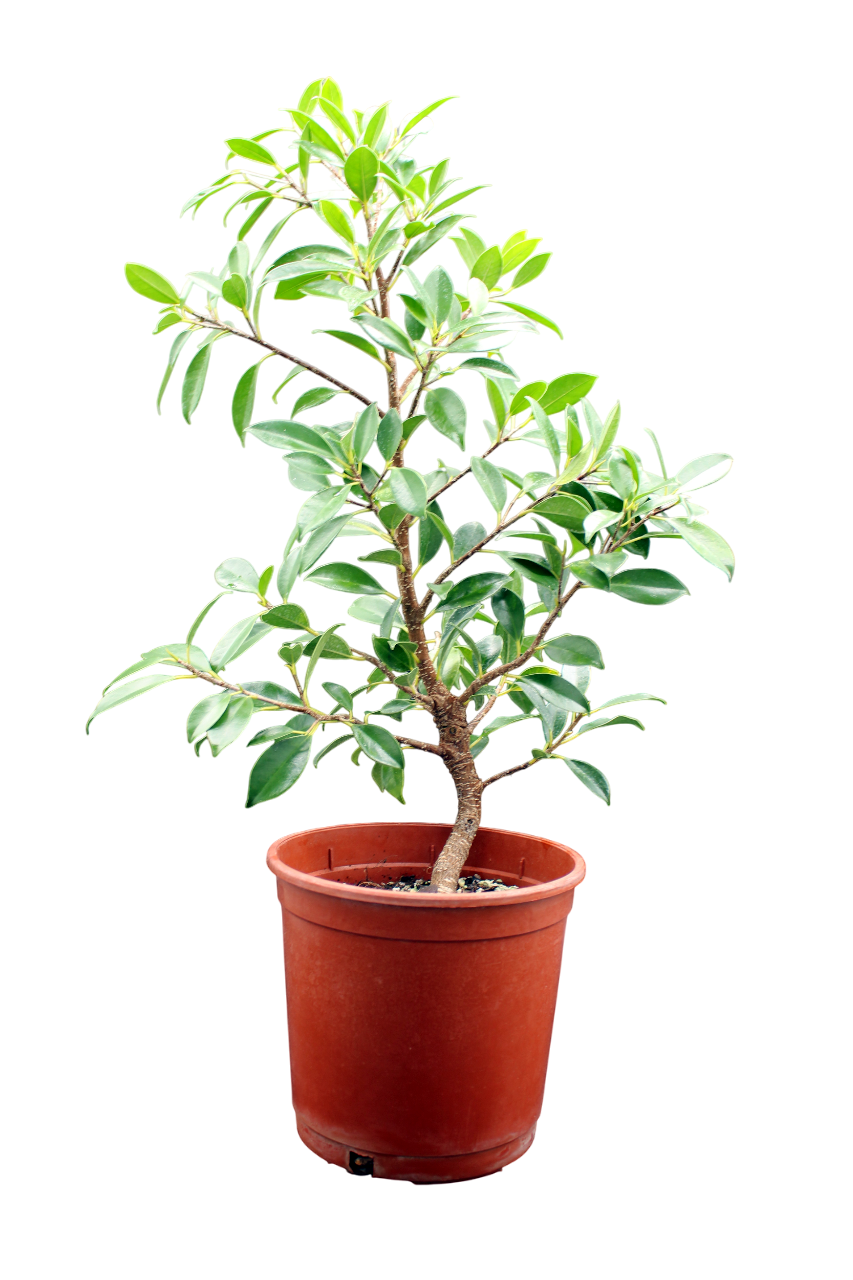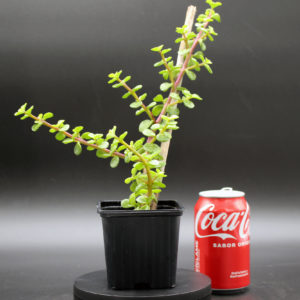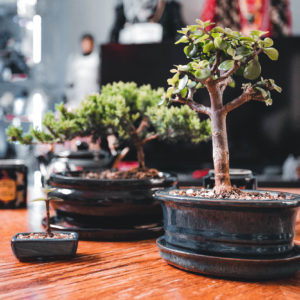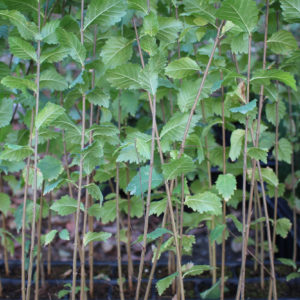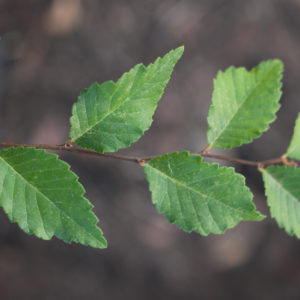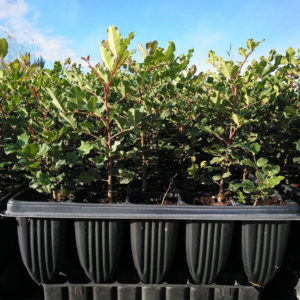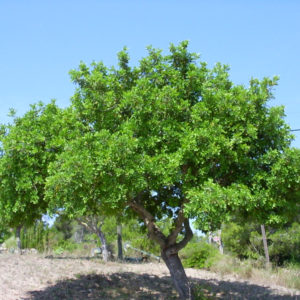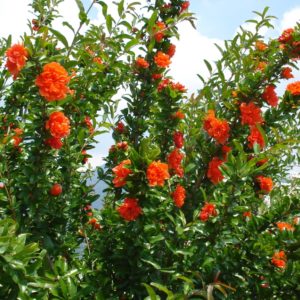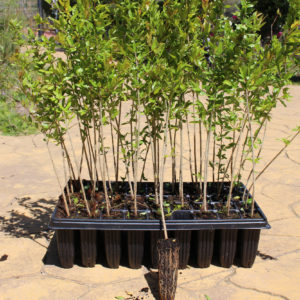Description
Ficus microcarpa ‘Tiger Bark’ is a striking cultivar of the Ficus microcarpa species, widely admired in the bonsai community for its aesthetic appeal and resilience. Native to Southeast Asia, this tropical fig tree is known for its distinctive bark, vigorous growth, and adaptability, making it an excellent candidate for both beginners and experienced bonsai enthusiasts.
Defining Characteristics
The most recognizable feature of the Tiger Bark ficus is its bark. As the name suggests, the bark develops light-colored, horizontal striations or flecks that resemble tiger stripes. These patterns are more prominent as the tree matures, giving the trunk a textured, aged look that adds visual interest — a highly desirable trait in bonsai.
The leaves are small, oval, and glossy, ranging from bright green to dark green depending on age and light exposure. They are evergreen, meaning the tree retains its foliage year-round. This consistency in appearance helps maintain the bonsai’s visual appeal through all seasons.
Another notable characteristic is its aerial roots. When grown in humid conditions, the Tiger Bark ficus produces long, dangling roots from its branches. Over time, these roots can be guided to the soil, creating an intertwined, banyan-like effect that adds complexity and visual drama to the bonsai.
Why It’s Popular in Bonsai
Ficus microcarpa ‘Tiger Bark’ is one of the most commonly used ficus varieties in bonsai for several key reasons:
- Hardiness: It’s incredibly tolerant of pruning, wiring, and repotting. It can bounce back from stress faster than many other species.
- Aesthetic Potential: The unique bark, small leaves, and aerial root development create the illusion of age and scale, essential for compelling bonsai design.
- Adaptability: It can thrive indoors or outdoors in warm climates, and it tolerates low humidity better than many tropical species.
- Fast Growth: This tree grows quickly, which makes it ideal for shaping and training. You don’t have to wait decades to see meaningful progress.
Cultivation and Care
Successfully cultivating a Tiger Bark ficus as a bonsai involves understanding its natural preferences and responding accordingly. Here’s how to manage the essentials:
- Light
Ficus microcarpa prefers bright, indirect sunlight but can adapt to lower light conditions indoors. When grown outside, it should be protected from direct midday sun, which can scorch the leaves, especially in hot climates. Indoors, a south-facing window is ideal. Supplemental grow lights can also help maintain health and encourage tighter internodes and smaller leaves.
- Temperature and Humidity
As a tropical species, the Tiger Bark ficus prefers warm conditions — ideally between 60°F and 85°F (15°C to 29°C). It is not frost-tolerant and should be brought indoors when temperatures fall below 50°F (10°C). While it enjoys higher humidity, it can survive in standard indoor humidity levels, though misting or a humidity tray can help encourage aerial root formation and reduce leaf drop.
- Watering
This tree likes evenly moist soil but doesn’t tolerate soggy conditions. Water thoroughly when the top inch of soil feels dry. In summer, this could mean watering daily; in winter, less frequently. Overwatering can lead to root rot, so good drainage is essential. Letting the soil dry out slightly between waterings helps prevent fungal issues.
- Soil and Repotting
A well-draining bonsai soil mix is crucial. A blend of akadama, pumice, and lava rock, or a commercial bonsai mix with added organic matter, works well. The Tiger Bark ficus should be repotted every 2–3 years to refresh the soil and prune the roots. Spring is the best time for this operation, just before the tree begins its most vigorous growth.
- Pruning and Shaping
The Tiger Bark ficus responds well to pruning. You can prune heavily to create primary branches or maintain shape with regular trimming of new shoots. Leaves will reduce in size over time with consistent pruning. Wiring can be done year-round, but care should be taken — the bark, while thick, can scar if wire is left on too long. Clip-and-grow is a safer method for long-term styling.
For a more dramatic look, growers often encourage aerial roots by wrapping moist sphagnum moss around branches or using a humidity tent. These roots can be positioned for aesthetic effect or allowed to fuse into the trunk, creating a more robust and ancient-looking tree.
- Fertilization
Because it grows quickly, this tree needs regular feeding. A balanced, water-soluble fertilizer applied every two weeks during the growing season will support healthy growth and leaf development. Reduce feeding in the winter, especially if the tree is kept in cooler indoor conditions where growth slows.
Styling Possibilities
Ficus microcarpa ‘Tiger Bark’ is highly versatile and works well in a variety of bonsai styles, including:
- Informal Upright (Moyogi): The natural flexibility and vigor of the tree make it easy to train into gently curving trunks.
- Banyan Style: With encouragement of aerial roots, you can replicate the look of ancient tropical trees with wide, flared bases.
- Root-over-rock: The aggressive root system can be guided over rocks to mimic trees growing in harsh, stony environments.
- Cascade and Semi-Cascade: While less common, its flexible branches can be trained downward for these dramatic styles.
It also makes a great subject for indoor bonsai, as long as it receives enough light and stable temperatures. For display, it’s often paired with simple pots that contrast with its complex trunk and root structure.
Pests and Problems
Tiger Bark ficus is generally pest-resistant, but indoors, it can attract common houseplant pests like spider mites, scale, mealybugs, and aphids. Regular inspection and prompt treatment with neem oil, insecticidal soap, or manual removal keep these in check.
Leaf drop may occur with sudden changes in environment, especially when moving the plant indoors for winter. This usually resolves as the tree adjusts.
Root rot, while less common, can be a serious issue if overwatered or planted in poorly draining soil. Yellowing leaves and mushy roots are key signs — in such cases, repotting and trimming affected roots is necessary.
Ficus microcarpa ‘Tiger Bark’ is a standout bonsai species due to its combination of beauty, toughness, and adaptability. Whether you’re a seasoned bonsai artist looking for a tree that can handle advanced styling or a beginner seeking something forgiving yet rewarding, the Tiger Bark ficus delivers. Its tiger-striped bark, vibrant foliage, and ability to grow aerial roots give it a unique personality that adds depth and character to any bonsai collection.
Additional information
| Weight | N/A |
|---|---|
| Size | 10-20cm, 20-30cm, 30-40cm, 60-80cm |



